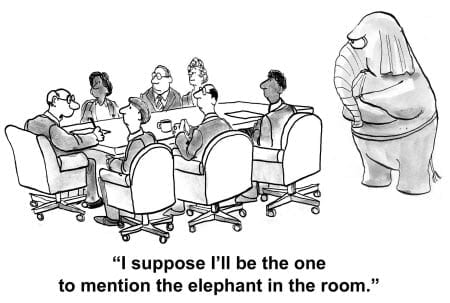For starters companies need to recruit job candidates like they are very important customers. That’s not rhetoric or a marketing slogan. They really are important customers! According to a recent CareerBuilder survey, fifty-eight (58) percent of applicants are less likely to buy from a company if they don’t get a response. Sixty-nine (69) percent shun the company after a bad interview experience. In a world where a disappointed candidate can send his or her plight viral with the click of a few keystrokes, ignoring candidates’ borders on malpractice.
 Nevertheless most companies treat employee sourcing and recruitment completely different than customer acquisition. Companies spend considerable time, resources, and money on marketing to new customers. They create attention-grabbing websites, bankroll SEO, and produce glossy and expensive collateral materials. They invest heavily in CRM. They acquire senior executives to oversee sales and marketing, hire top talent for sales and marketing teams, and even retain outside agencies to create brands, embellish its image, and advertise its products and services.
Nevertheless most companies treat employee sourcing and recruitment completely different than customer acquisition. Companies spend considerable time, resources, and money on marketing to new customers. They create attention-grabbing websites, bankroll SEO, and produce glossy and expensive collateral materials. They invest heavily in CRM. They acquire senior executives to oversee sales and marketing, hire top talent for sales and marketing teams, and even retain outside agencies to create brands, embellish its image, and advertise its products and services.
But when it comes to acquiring their “most important assets” (aka workers), most companies are completely out of touch with the labor market. Their approach is generic, bland, and frankly, out-of-touch.
The “pitch” to lure a candidate is often just a job description. That’s as powerful as flipping the “Open” sign on and expecting customers to come rushing through the front door. Compare that to marketing initiatives launched to acquire a customer with the message recruiters leave.
Customers get to chat live with representatives, just by showing up on a website.
Job applicants get to send resumes and applications into a black hole.
Customers are contacted within minutes and greeted.
Job applicants are rarely acknowledged personally or promptly.
Customers are courted with special offers, newsletters, and invitations to follow them on social networks.
Job applicants are greeted with formality and bureaucracy.
Customers are welcomed as special guests.
Job applicants are treated like children, told to wait in line and be quiet until spoken to.
The challenge to find quality talent is only getting more formidable.
 In many businesses, sourcing and recruitment responsibility is rarely more than a bullet on an employee’s job description and the budget committed to it is typically a line item under human resources. More often than not, sourcing and recruiting are shared functions of the HR professional competing with compliance issues, terminations, performance problems, payroll, benefits, training, and more. Ironically, sourcing and recruiting skilled workers is itself a job that requires dedicated resources and advanced skills.
In many businesses, sourcing and recruitment responsibility is rarely more than a bullet on an employee’s job description and the budget committed to it is typically a line item under human resources. More often than not, sourcing and recruiting are shared functions of the HR professional competing with compliance issues, terminations, performance problems, payroll, benefits, training, and more. Ironically, sourcing and recruiting skilled workers is itself a job that requires dedicated resources and advanced skills.
To compete and grow, companies must adopt sourcing, recruitment, and retention strategies that are competitive for the high-tech, globalized, fast changing world in which we live. Acquiring and retaining top talent requires more than the lip-service many companies give to it.
Here’s a starter list for companies who want to attract more qualified workers.
- Establish your “employer” brand. Employer branding is more than a buzz word. Market to job candidates like you appeal to your best customers.
- First impressions count. A recent study (Dr. John Sullivan) revealed that over 90 percent of candidates who reach a company career site do not apply! The first interaction must be interesting, inviting, and interactive. If a company has a company career, it’s typically boring and transactional. It’s a turn-off and deal killer. Build a company career page that engages the talent you want.
- Recruit 24/7/365. You never know when a key employee will leave unexpectedly. Every business needs a pool of qualified workers they can tap when needed.
- Close the black hole. From the first contact to the job offer (or no-offer) the candidate should never be asking or thinking “what’s next?” Respond to all applicants promptly and personally.
- One-site-sourcing is dead. Sourcing candidates today requires throwing out a wide net to capture candidates from a variety of sources, including social media.
- Engage social media. Invite all applicants to follow you, to like you, to connect with you. Even if they don’t become employees, they know people who know people.
- Go mobile. Between 60 and 75 percent of job candidates use a mobile device (smartphone or tablet) to apply for jobs. Few companies have an application ready to accommodate them. A mobile ready job application is no longer an option. It’s essential.
- Automate what can be automated. Labor-intensive processes (like spreadsheets and job submission) for sourcing, recruiting, screening, and hiring have got to go.
- Analyze, analyze, analyze. Companies need to stop throwing money at recruiting. The time for using Big Data to make decisions when it comes to finding qualified workers has arrived.
- Onboard like it matters. (It does!) 22 percent of staff turnover occurs in the first 45 days of employment. New employees who participate in a structured onboarding process are 58 percent more likely to be with the organization after 3 years. (Source: Wyndhurst Group).

Well said and very true. We see companies violate all starter list items every day.
Rick